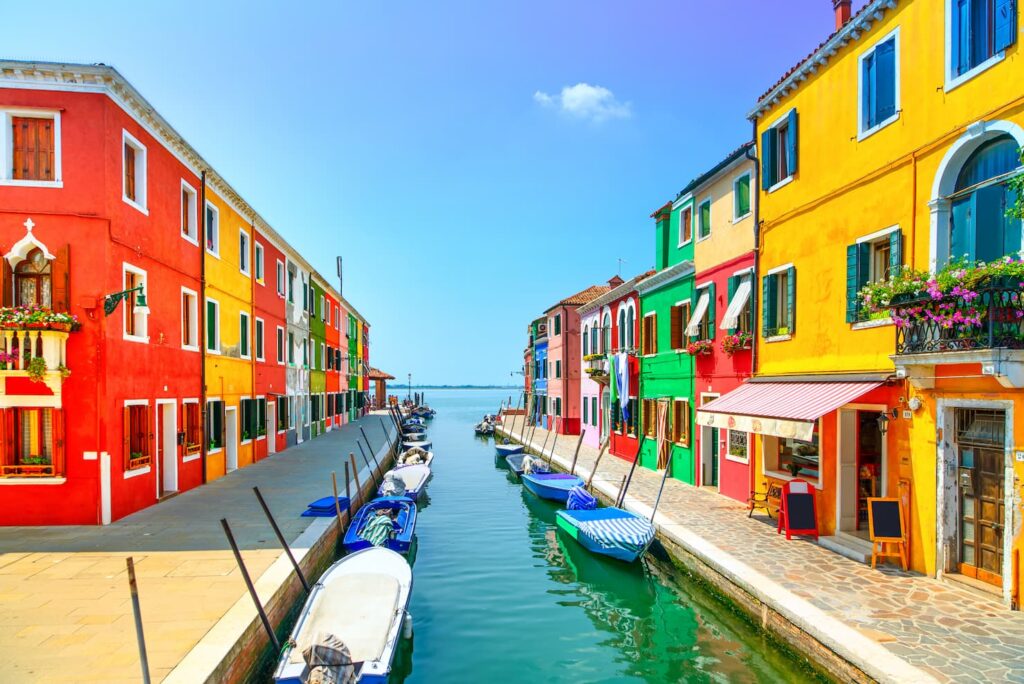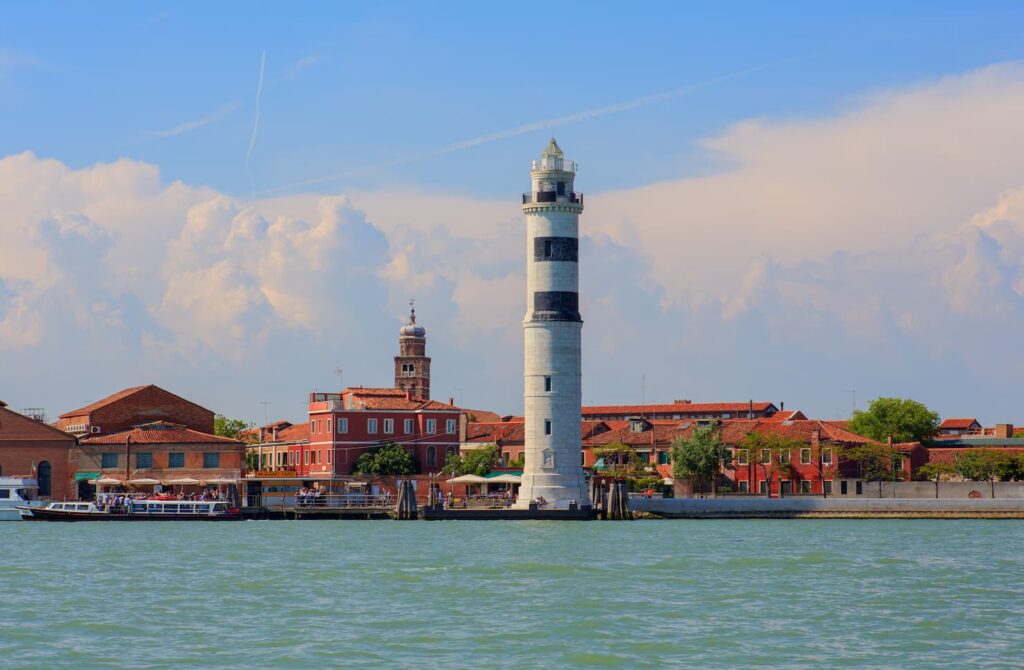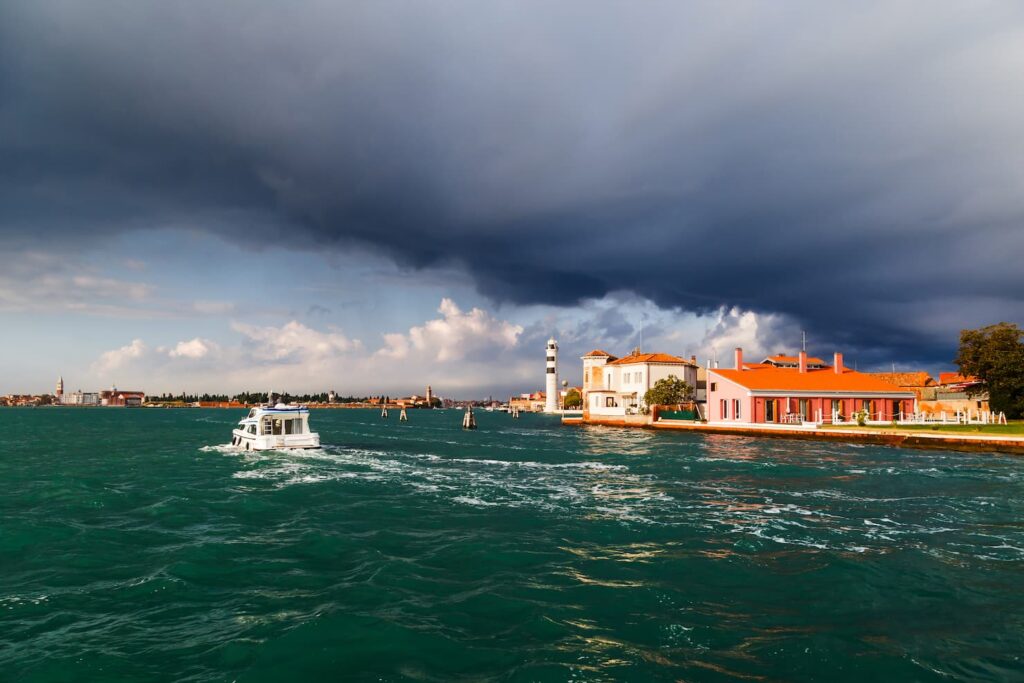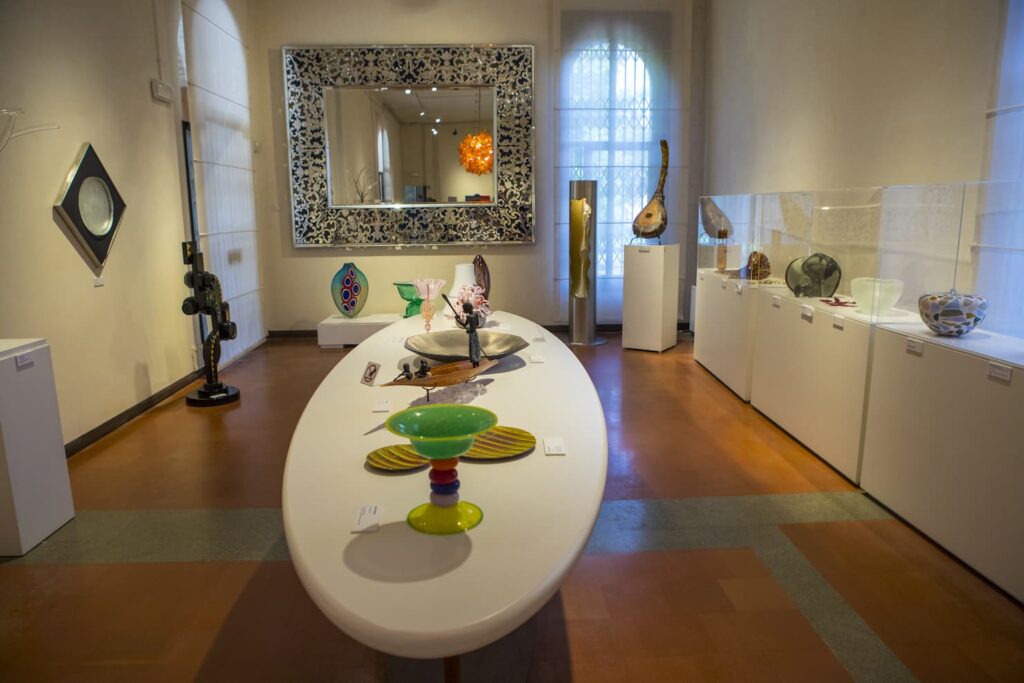Ever since man saw the sea, the first dream has been to sail it…ever since he found himself in the water in the night, the first need has been to build a lighthouse to return home!
So here it is that Murano, like every seaside place, has its lighthouse, the symbol of the island and the lagoon.
A splendid lighthouse of Istrian stone built in 1934, but Murano even before that actually had a system to illuminate the lagoon.
Continue reading the article to discover the history of the Murano lighthouse, but remember that with a full tour you can admire the lighthouse from the water and take wonderful photographs!
In fact,before we continue, let me give you a piece of advice: booking online is the best way to get to Murano, and this will save you money, get you benefits, and you won’t have to worry about travel.

BEST-SELLING
Tour of Murano, Burano and Torcello + Glassblowing Demonstration
Discover a scenic boat tour of the islands of Venice with a visit to a Murano glass factory and glassblowing demonstration
Secure payment
Instant confirmation
Mobile ticket
Reserve a priority ticket: with a full tour you can admire the lighthouse from the water and take wonderful photos!
The history of the Murano Lighthouse
Murano’s first lighthouse was built in 1912: a piled structure served as a support for an iron trellis with a revolving oil lamp on top lit by the keeper.
Later, gas lighting was introduced that allowed the light to be turned off from the ground.
It was only in the early 1930s that the need to build a real lighthouse was felt: the project involving a stone construction proposed by engineer Mario Moro won.
Stones from Istria were used, and in 1934 the old pylon “retired”: Murano had its splendid lighthouse, which became a symbol of the lagoon!

Murano Lighthouse | ID 44891273 © Giuseppe Anello | Dreamstime.com
However, the Venice lagoon was never actually without a lighthouse: as early as the time of the Republic there was a wooden tower on which fires were lit.
Thanks to the light produced, the lagoon was illuminated by exploiting a play of mirrors; moreover, during the day the tower was an excellent lookout point for monitoring the sea.
Function and architecture

Vaporetto approaching Murano lighthouse stop | ID 310353482 | Venice © Iryna Budanova | Dreamstime.com
Compared to its predecessor, Engineer Moro’s lighthouse is much closer to the water of the lagoon and consequently needs more protection, which is why a barrier of stone boulders protect it.
But it is not a simple lighthouse-Murano wanted its own little work of art! In the lower part, in fact, there are two bas-reliefs depicting two Madonnas: one protects the entrance to the lighthouse, while the other observes the lagoon on the opposite side.
Today the lighthouse is operated by the Navy (as are all those on the peninsula) and runs on electricity with automated ignition.
Its light today is very powerful and perfectly illuminates the entrance to the Lido harbor; it has an aeromaritime function and therefore has an all-glass dome on top.
This splendid lighthouse is an impressive 35 meters high and has a range of 17 nautical miles!

BEST-SELLING LIGHTHOUSE EVER
Tour of Murano, Burano and Torcello + Glassblowing Demonstration
Discover a scenic boat tour of the islands of Venice with a visit to a Murano glass factory and glassblowing demonstration
Secure payment
Instant confirmation
Mobile ticket
Where it is located and how to see it
The lighthouse is located in Fondamenta Piave, just a step away from the water!
ACTV Line 3, which leaves from Venice and takes about 25 minutes to get there, not only takes you to Murano, but also makes a circular loop around the island and one of the stops is right at the Lighthouse, which also gives the stop its name.
Doing so will allow you to observe the lighthouse from the water. If you want a more scenic route, however, I suggest you also consider lines 4.1 and 4.2: the length of the route in this case is a bit longer.
The vaporetto, of course, offers public transportation, but if you choose a private tour you will be able to take your time getting closer to the lighthouse to take pictures and get additional historical information provided by the guide.
Some tours also include the use of a private boat for small groups, and in this case, you need only ask your guide what you want to be accommodated.
The lighthouse cannot be visited inside unfortunately, however its straight white color on the sea offers exciting suggestions at whatever time of day you choose to admire it, whether from land or water-a shot that I’m sure will end up on your feed!
Other nearby attractions to match
Short on time to visit Murano? Don’t worry: there are many attractions that can be visited concentrated in a small space, right near the lighthouse.
In fact, with a very short walk, you will find the Church San Pietro Martire, inside which you can admire splendid works of art by Tintoretto, Veronesi and Bellini.
But that’s not all! Without almost having to walk further you can easily reach the wonderful Murano Glass Museum, an essential stop during your visit to the island.
A little more than 5 minutes from the lighthouse, moreover, you can walk along Fondamenta dei Vetrai, the beautiful street along the canal characterized by the presence of glassworks and workshops: admire the splendid glass artifacts that make Murano famous all over the world!
With an additional 10-minute walk you could also reach the Basilica of Santi Maria e Donato.

Murano Glass Museum Hall | ID 157504886 © Chris Dorney | Dreamstime.com
Finally, don’t miss the glassblowing demonstration-you‘ll be spoiled for choice in this area!
There are many furnaces that will allow you to admire these ancient techniques, such as the Vetreria Artistica Colleoni.
You don’t need much time to explore the entire island, plus you can count on Line 3 to get you to different points more quickly.
However, if you’re really short on time, choose what you don’t want to give up but don’t worry: as you’ve realized , the lighthouse is easily matched to whatever you prefer!

BEST SELLER
Tour of Murano, Burano and Torcello + Glassblowing Demonstration
Discover a scenic boat tour of the islands of Venice with a visit to a Murano glass factory and glassblowing demonstration
Secure payment
Instant confirmation
Mobile ticket
Frequently asked questions
To understand whether glass is authentic, there are a few signs: first, be wary of products with opacity, since Murano glass is characterized precisely by its luster. Conversely, some signs of imperfection are a good indication of veracity since it is a characteristic of entirely manual production. In any case, many glass masters affix a signature or personal mark to their products or even add gold or silver leaf as an ornament. Some workshops even issue a certificate of authenticity. In conclusion, be wary of prices that are too low: Murano glass products are luxury goods, so it is unlikely to buy one without spending the right amount.
To get to the island of Murano you need to take the vaporetto that leaves from Venice. It will be sufficient to use ACTV line 3, which will take you to your destination after a journey of about 25 minutes.
The main difference between the two islands is that they have specialized in different crafts. Murano’s history, in fact, is characterized by glassmaking, while Burano’s is characterized by lace, which, together with its colorful little houses, makes it known beyond national borders.
Considering the small size of the island, there are many furnaces on the island: we are talking about as many as 100 active furnaces! These are those that deal with hot working, but there are about another hundred companies that deal instead with second processing and therefore finishing and decoration. Considering that this sector employs about 1240 people, it is estimated that Murano is one of the areas with the highest density of artisanal glass producers in Europe.
Conclusions
Here we come to the end of this article on the history of the Murano lighthouse.
We have discovered together the stages that led the lighthouse to appear as we see it now, starting from its oldest ancestor: the one that illuminated the lagoon at the time of the Republic of Venice.
I explained how to get to the island and what to see in Murano, especially near the lighthouse, and before I finished I answered the most frequently asked questions that average tourists ask about it.
Have you ever visited the Murano lighthouse? What do you think about it? Write to me in the comments!
Thinking of visiting the lagoon without coming to the sight of its symbol would be really crazy, don’t miss this wonderful attraction: book your tour now and admire the wonderful stone lighthouse both from the sea and from land!
